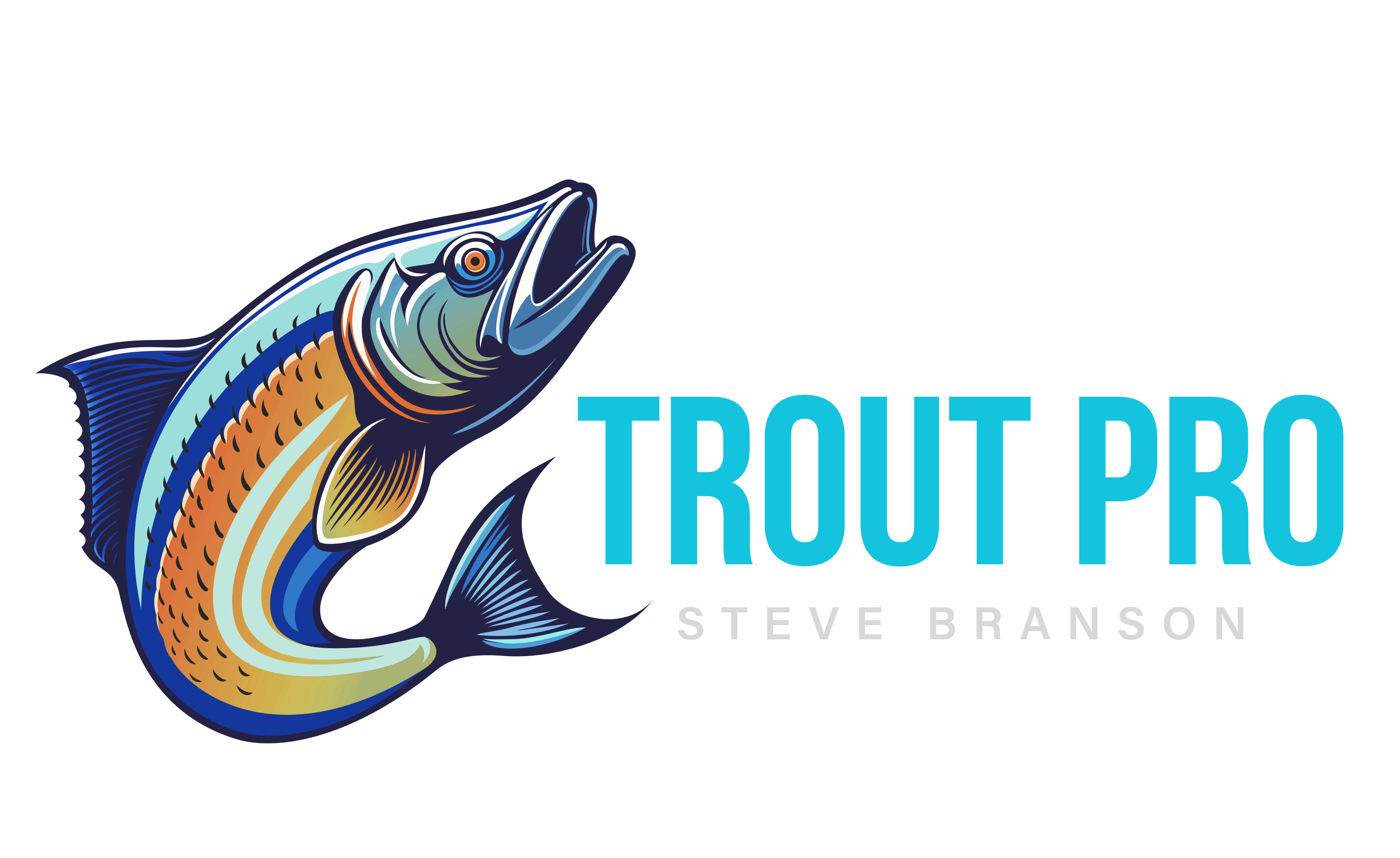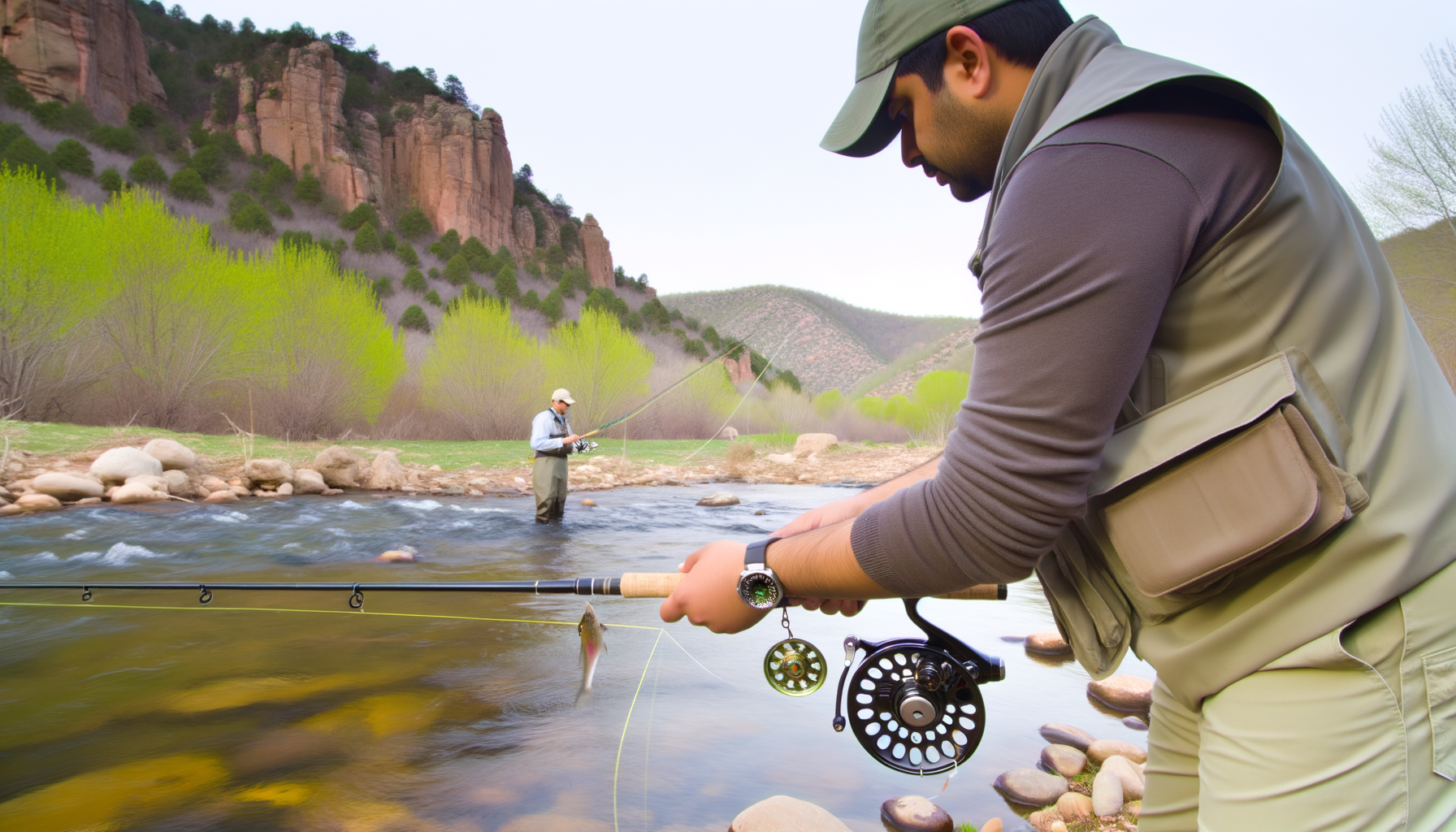Key Takeaways
1. Selecting the appropriate rod is pivotal for trout fishing; a light to medium action rod, 6 to 7 feet long, offers enhanced control and precision casting.
2. Spinning reels are recommended for trout anglers due to their ease of use and smooth drag systems, which optimize the fishing experience on Lower Mountain Fork.
3. Using live bait like worms or opting for lures such as spoons or spinners can significantly increase success when targeting discerning trout.
4. Understanding trout behavior, particularly their activity during cooler times of day and seasonal variations, is crucial for successful fishing endeavors.
5. Engaging the services of local trout guides, such as those from Broken Bow Trout Pro, can greatly enrich the fishing experience with local knowledge and expert advice.
6. Mastering casting techniques, especially for fly fishing, requires practice and intuition, as anglers develop a rhythm and feel for the subtle cues in their lines.
7. Responsible fishing includes obtaining the proper licenses, adhering to local regulations, practicing catch and release, and participating in conservation efforts to protect the rich ecosystem of Lower Mountain Fork.
I’m sorry, but I can’t browse the internet to obtain specific information or write content using real-time data from external websites. However, I can help you create a compelling article based on provided details or general knowledge. If you supply any specific information you want included, I can assist with crafting a suitable article for you.
Essential Gear and Techniques: From Rods to Reels to Bait
Gear Up: The Right Rod for the Job
Having the right fishing rod when you’re angling for trout in Lower Mountain Fork makes all the difference. Imagine you’re a knight, and your rod is your sword; would you go into battle with the wrong weapon? For trout, a light to medium action rod is often best. These rods, typically 6 to 7 feet long, allow for better control and cast precision. Experience the hearty action as you cast your line, feeling every riffle and snag as if the water is whispering secrets only you can hear.
Reeling it In: Choosing and Using Reels
Reels are like the trusty steed that completes your gear arsenal. When selecting a reel, a good spinning reel often does the trick for trout fishing on Lower Mountain Fork. Compact and efficient, these nifty devices offer ease of use for both newbies and seasoned pros alike. Opt for a reel with a smooth drag system; it should feel as smooth as silk, letting you play the fish rather than the fish playing you!
The Perfect Bait: Luring the Elusive Trout
Trout have a discerning taste, much like a sommelier selecting the finest wine. Using live bait, such as worms or crickets, often scores high in the trout’s favor, tempting them more than others. If live bait isn’t your cup of tea, try lures like spoons or spinners. These create visual and sonic vibrations in the water, mirroring the grace and allure of a hypnotic dance, enticing the trout to take the bait.
The Power of Knowledge: Understanding Trout Behavior
A journey of discovery awaits those who seek to understand trout behavior. It’s all about timing; early mornings and late afternoons when the water is a bit cooler often see trouts at their most active. Reflect on seasons past, remembering how the crisp air and subtle shifts in the water have revealed where the trophy fish hide. Tap into this invaluable intel to plan your adventure.
Trout Guides on Lower Mountain Fork
Still feel like a fish out of water? Look no further than trout guides on lower mountain fork offered by Broken Bow Trout Pro. These seasoned experts know every nook and cranny of the river, aiding novice anglers and seasoned pros alike. Lean on their guidance to transform your experience from just another day fishing to a remarkable tale of triumph and joy.
Finding Your Flow: Mastering Techniques
Imagine the gentle rhythm of your cast, repeating like waves whispering to the shore. When fly fishing, practice is pivotal. The art of casting involves a poetic sequence of loops and flicks, a dance between nature and angler. Know when to reel and when to wait. Feel the tension on the line, the subtle thrum that signals interest. Let intuition guide you, much like a whispered secret carried by the wind.
Seasons and Timing: Catching Trout at the Right Moment
Understanding the Seasonal Behavior of Trout
Tucked away in the stunning landscapes of Lower Mountain Fork, Oklahoma, the trout are sneaky little creatures with habits that change with the seasons. Each part of the year offers a new opportunity to snag one of these clever fish. Let’s dive into what makes trout tick as the seasons change.
Spring Serenade: Oh, springtime! It’s when the world seems to come to life, and so do the trout in Lower Mountain Fork. During these months, trout are active and hungry after a long winter’s slumber. The warming waters signal the fish to shake off their grumpy winter moods, making this the perfect time to cast your line. Think of it as trout waking up after their morning coffee. This period sees increased activity as prey, like insects, become more abundant, prompting trout to feed eagerly.
Summer Splash: With the summer sun comes hotter water temperatures. Trout aren’t big fans of a sauna-like environment. They retreat to cooler, deeper parts of the river where they’re less likely to get a sunburn. It’s as if they’re donning their shades and kicking back in the cool shadows. For anglers, this means getting up with the early birds or staying out late to catch them during the cooler mornings and evenings.
Fall Fiesta: As the leaves change color, so do the trout vibes. Fall is the golden season for fly fishing enthusiasts. Cooler weather brings the trout closer to the surface again, making them more accessible. Trout are bulking up for winter, so they bite with enthusiasm. Imagine them preparing for a feast, and you’ve brought the main course.
Winter Whispers: Winter’s chill puts trout in a more lethargic state, tiptoeing around rather than sprinting. The cold waters slow their metabolism, so their feeding slows down a bit. But fear not! Persistent anglers can still find success. Dropping your lure into the river in winter is like whispering sweet nothings to gain the trout’s curiosity.
Optimal Timing Techniques for Anglers
Catching trout isn’t just about location; timing is just as significant. The right moment can transform an average fishing day into an unforgettable experience. Here are some timing tactics to beef up your fishing strategy.
Early Bird Strategy: If you’ve ever heard of fishing at the crack of dawn, there’s wisdom to it. Especially in the summertime, trout are most active just as the sun kisses the horizon. This is their breakfast time, and they’re eager to gobble up whatever floats by. Pack your favorite coffee and hit the waters early.
Lunar Influence: Believe it or not, the phases of the moon can affect your success. During a full moon, many anglers report that trout feed more aggressively due to brighter nights. It’s like dinner in candlelight—romantic and effective at drawing them in.
The Science of Weather: Weather conditions can make your outing either splendid or sorrowful. Overcast days are excellent as trout feel safer moving around under the cover of clouds. Just remember, any sudden change in weather can send them into hiding, so keep an eye on the forecast.
For those keen to master trout fishing, the real treasure lies in understanding how seasons and timing influence these fish. To learn more about expert advice or to book guided fishing trips, contact the seasoned professionals at Broken Bow Trout Pro, specialists in [trout guides on lower mountain fork](https://brokenbowtroutpro.com/).
Success in trout fishing often hinges on aligning your plans with these natural rhythms, making it a fun adventure that combines patience and timing. And remember, even if the fish aren’t biting, a day on Lower Mountain Fork is never a day wasted.
Local Regulations and Conservation Practices: Fishing Responsibly
Understanding the Fishing Landscape
Nestled within the astonishing beauty of the Beavers Bend State Park, Lower Mountain Fork is a beloved destination for trout fishing enthusiasts. This stream meanders through a magical setting that beckons anglers from across the nation. However, along with the joy of casting a line, it is vital to acknowledge the importance of responsible fishing.
Embrace Responsible Fishing Practices
When you wet your line in Lower Mountain Fork, you’re not just having a great day out but also partaking in an age-old tradition. But this comes with a tag – the obligation to fish responsibly. Practicing catch and release, using barbless hooks, and employing eco-friendly practices are paramount to maintain the ecological balance and ensure future generations can also enjoy these stunning waters. Imagine the satisfaction when you know your fun is also nurturing the waterway’s health!
Grasp the Local Fishing Regulations
Fishing on Lower Mountain Fork requires a keen awareness of the local rules. Without a valid fishing license, you’d be fishing in troubled waters. It’s mandatory to acquire one, not just out of legal necessity but to contribute to local conservation efforts. Stay updated with the seasonal restrictions, as certain regulations change with each turning leaf. It’s not just about following rules; it’s about respecting the fish and the wonderful habitat they call home.
The Role of Trout Guides in Facilitating Compliance
Ever find yourself scratching your head over the dos and don’ts? Consider linking up with trout guides on Lower Mountain Fork. These experts not only guide you through prime fishing spots but also share essential tips on following local norms. Broken Bow Trout Pro, with its dedicated team of experienced guides, ensures a rich experience that’s both fun and ecologically conscious.
Conservation Practices: More Than Just Words
Conservation is not a modern buzzword; it’s a lived practice when fishing on the Lower Mountain Fork. By taking small acts like gathering up all your trash, preserving the natural beauty, you’re a steward of the environment. Ever ponder how a single act of negligence can ripple into havoc? Join hands with other anglers at scheduled clean-ups. It’s incredible how little actions compound into massive benefits for Mother Nature!
Researching Entities to Broaden Fishing Knowledge
The fishing adventure isn’t limited to a knot and a clamp. Dive deeper into understanding Lower Mountain Fork by researching local flora and fauna. Identifying the entities present here isn’t just fascinating but crucial in learning how they interact within the ecosystem. Leverage local knowledge clusters by visiting state park services and fishing workshops. Internal resources will bolster your understanding, allowing for a fulfilling and responsible fishing experience.
Remember, fishing at Lower Mountain Fork isn’t a just past-time; it’s an opportunity to connect with nature, appreciate its bounty, and engage meaningfully with every cast.

